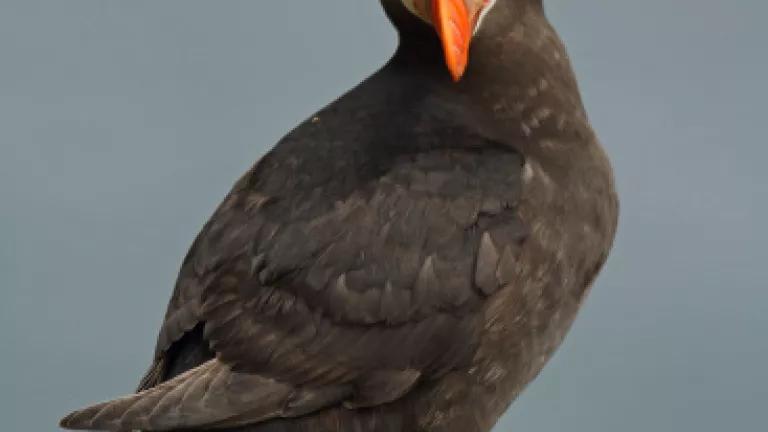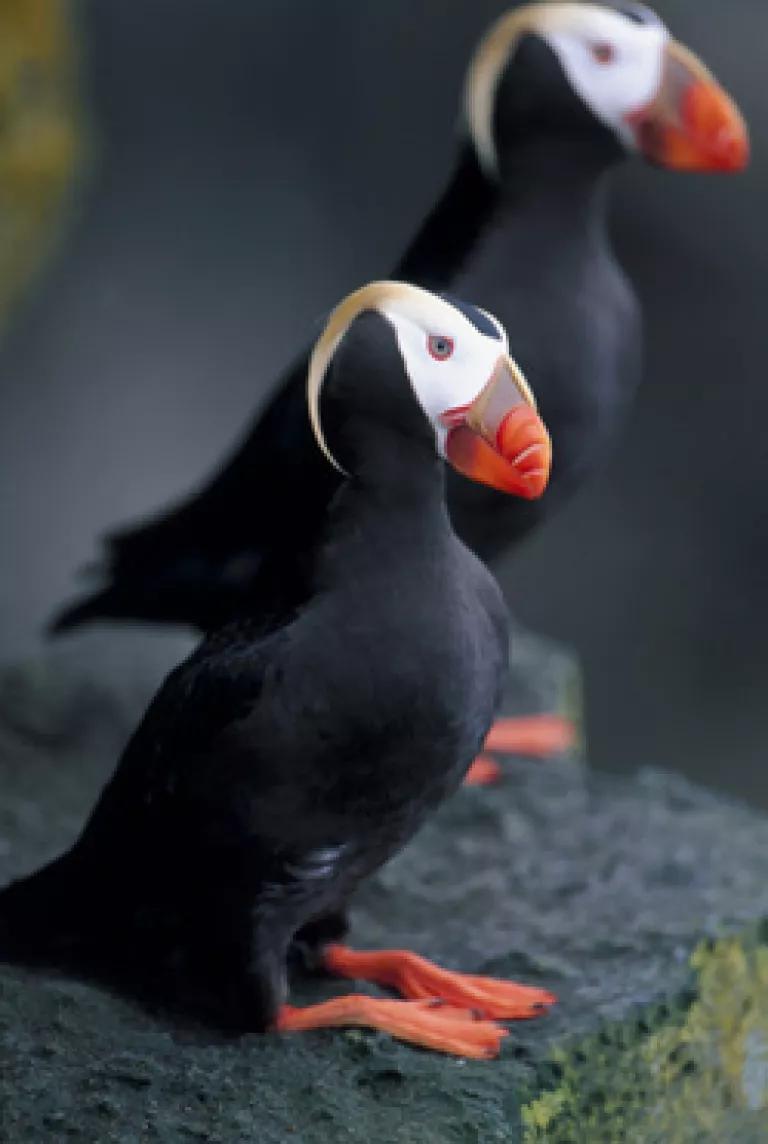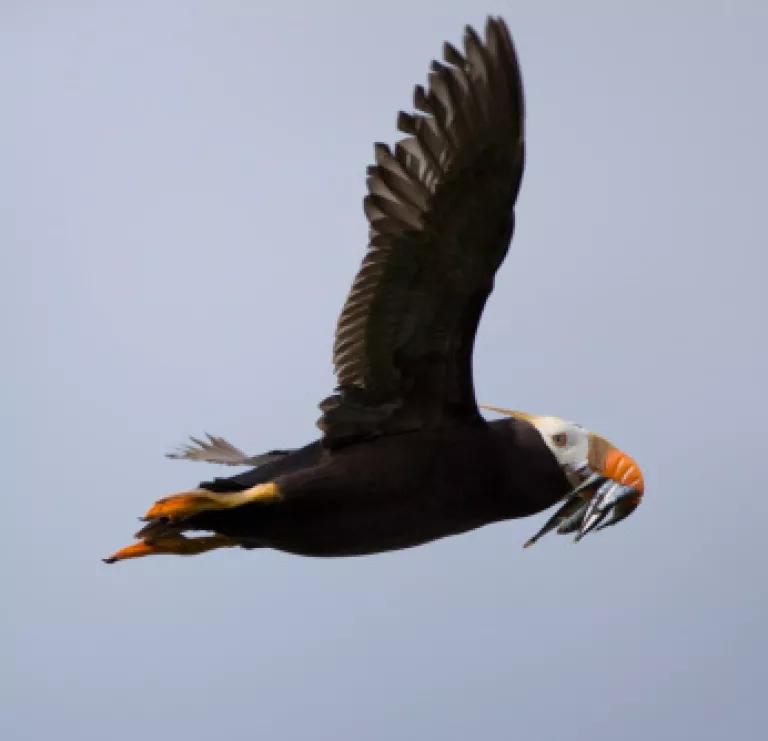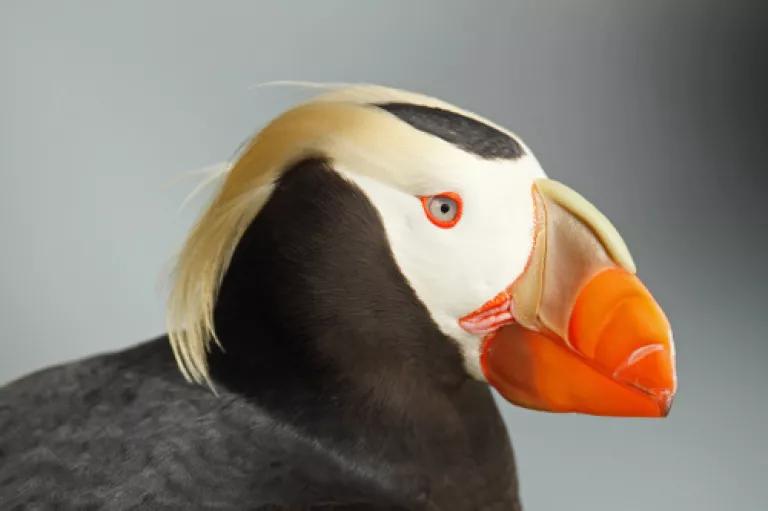
Named for the striking yellow tufts that grow above its eyes during breeding season, the tufted puffin is one of the most loved birds in North America. With its short wings that allow it to swim expertly underwater, the tufted puffin dives for prey along coasts of California, Oregon, and Washington. Now populations of this magnificent seabird in the three states, as well as in Japan, are in trouble, as lack of prey, climate change, fishing, oil spills, and other dangers take their toll. That’s why NRDC submitted a petition to the U.S. Fish and Wildlife Service today to list the contiguous U.S. population of tufted puffin as “endangered” under the Endangered Species Act.


Tufted puffins are able to dive up to 60 meters to catch prey (primarily small fish like sardines, herring, and anchovy) and may make as many as 360 dives per day when foraging to feed their chicks. (Photo credit: Getty Images)
Breeding populations of tufted puffins in California, Oregon, and Washington have declined by 85 to 90 percent in the last three decades, from more than 30,000 birds to no more than 4000 today. Most of these remaining puffins are in Washington. Oregon and California are each estimated to have breeding populations of less than 300 birds. The population in Japan is down to ten breeding pairs. Tufted puffins are still numerous in Alaska and British Columbia. But the more southern populations that are in steep decline encompass a significant portion of the species’ historic range and contain genetic diversity that is important to maintain if the species is to persist in the long-term, particularly with impacts from climate change escalating.
As is usually the case, humans are the cause of the tufted puffin’s plight. Climate change, driven by our burning of fossil fuels, is altering temperatures and circulation patterns of our oceans, disrupting the food web and making it harder for puffins to forage and to successfully reproduce. Puffins are also caught as bycatch in commercial fishing nets, drowning underwater when they cannot surface for air.
Diving for food and roosting on the surface of the water makes the tufted puffin highly vulnerable to impacts from oil spills. A single oil spill can wipe out entire breeding colonies. In fact, in 1991, the Tenyo Maru oil spill off the coast of Washington killed about 10 percent of the state’s population of tufted puffins. Similarly, the Exxon Valdez spill was responsible for the death of up to 13,000 Alaskan tufted puffins in 1989.
To compound the problem, tufted puffins generally return to the same colony each year and even if any birds were tempted to stray, breeding colonies in the contiguous United States are physically separated from other breeding colonies to the north. This has made recovery very difficult as population numbers dwindle. In recent years, while tufted puffin numbers in the contiguous U.S. have steadily declined, there has been no evidence that birds from healthier northern populations are coming to fill in the gaps.
Following the petition filed by NRDC today, FWS now has 90 days to determine if our petition shows that an “endangered” listing for the contiguous U.S. population of tufted puffin may be warranted. If it agrees, FWS will have another year to decide if it will, in fact, list the population under the ESA. As part of this process, FWS would solicit public comments, and it will be important that everyone who cares about saving the tufted puffin weigh in. If the contiguous U.S. population of tufted puffin is listed, it and its habitat will receive legal protection from harm. For example, limits could be put on fishing of certain fish populations that are critical to the puffin’s diet.
With tufted puffins in such dire straits in the lower forty-eight states, it’s essential that the Fish and Wildlife Service list them under the Endangered Species Act. Only with federal protection will these quite special seabirds have a fighting chance at recovery.

Photo credit: Getty Images

